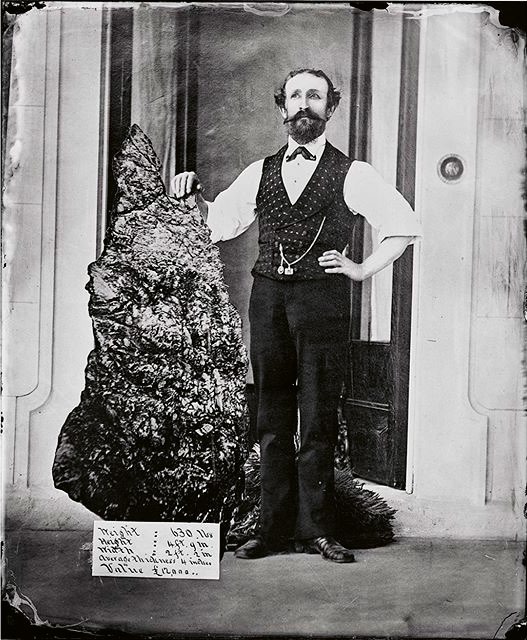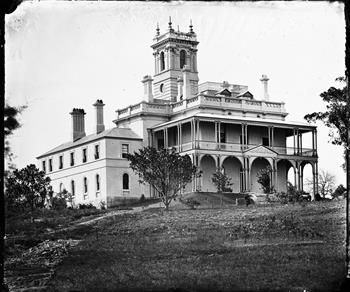BALMAIN AND LEICHHARDT, FROM HOLTERMANN’S TOWER, c.1921
ARTHUR STREETON
oil on wood panel
16.5 x 66.0 cm
signed lower right: A STREETON.
inscribed verso: OUTHWAITE / … / DEC 1 / No 1
Edward Walter Outhwaite, Melbourne, by 1935 (inscribed verso)
Thence by descent
Private collection, Melbourne
Christie’s, Melbourne, 18 April 1994, lot 46 (as ‘Balmain and Leichardt’ [sic.])
Private collection, Sydney, acquired from the above
Sotheby’s, Melbourne, 24 November 1998, lot 30 (as ‘Balmain and Leichhardt’)
Joseph Brown Gallery, Melbourne, acquired from the above
The Cbus Collection of Australian Art, Melbourne, acquired from the above on 25 November 1998
Streeton's Show of the Sunlit Suburbs of Sydney, Athenaeum Hall, Melbourne, 31 October – 5 November 1921, cat. 1 (as ‘Balmain and Leichardt [sic.], from Haltermann’s [sic.] Tower’)
Arthur Streeton: Blue and Gold, Carrick Hill, Adelaide, 25 October 2017 – 25 February 2018
on long term loan to Geelong Art Gallery, Victoria
Colquhoun, A., ‘Sydney Harbour on Canvas. Charm of Arthur Streeton’, The Herald, Melbourne, 31 October 1921, p. 7 (as ‘Balmain and Leichhardt, from Halterman’s Tower’ [sic.])
‘Mr Streeton’s Pictures’, The Argus, Melbourne, 1 November 1921, p. 4 (as ‘Balmain and Leichhardt, from Halterman’s Tower’[sic.])
probably: Streeton, A., The Arthur Streeton Catalogue, Melbourne, 1935, cat. 765 (as ‘Panel, Balmain and Leichhardt’)
Nainby, B., Stanhope, Z., and Furlonger, K., The Cbus Collection of Australian Art, in association with Latrobe Regional Gallery, Melbourne, 2009, pp. 17, 44 – 45 (illus.), 232
LOW RES.jpg

Arthur Streeton first visited Sydney in 1890. Enthralled by the sparkling blue harbour and surrounding landscape, he later wrote to Theodore Fink in Melbourne, declaring ‘Sydney is an artist’s city – glorious’.1 Residing there for most of the following six years, he painted at various locations including Coogee, Manly, Curlew Camp – where he lived for a time on the shores of Little Sirius Cove – as well as recording views of the burgeoning, bustling city and nearby Circular Quay. He was captivated by the ocean, describing it in a letter to Tom Roberts as, ‘a big wonder… a great miracle’, which was ‘hard to comprehend… like death & sleep’2, and it was a central focus of many paintings of the time, typically coloured vivid ‘Streeton blue’ and reflecting clear skies above. Streeton’s paintings became so synonymous with the harbour that in 1900, only a decade after his first visit, The Bulletin claimed that he, rather than Captain Arthur Phillip, had ‘discovered’ Sydney Harbour.3
LOW RES 2.jpg

The lure of the harbour city remained strong and although Streeton lived overseas between 1897 and 1920, and was based in Melbourne upon his return, he visited Sydney on more than eleven occasions between 1906 and 1937.4 Returning to Australia in February 1920, he went to Sydney two months later, explaining to a Daily Telegraph journalist, ‘Every time I get back, Sydney looks finer… Even with all the new buildings… I want to do one fine thing of Sydney… The point of view is the difficulty – the elevation.’5 Streeton found the elevation he wanted in 1921, producing a number of paintings which depicted aspects of the city and surrounds viewed from high vantage points, including some of the new buildings which had been constructed during his absence. Golden Bay, Sydney, 1921 (private collection), for example, was painted from the top of Cliveden, a twelve-storey commercial building in Bridge Street, which was built in 1915. Focussing on rooftops and the architectural detail of familiar buildings including the Lands Department building with its clock and copper top in the foreground, a glimpse of Farm Cove to the left, this painting exemplifies the Sydney which Streeton later described in glowing terms, ‘…her architecture towers up in golden brown stone, and the scarf or belt blowing about her waist is the magic blue harbour’.6
Most likely also painted during this trip, Balmain and Leichhardt, from Holtermann’s Tower, c.1921, saw Streeton working from the tower of a grand Victorian mansion built in 1874 by Bernard Otto Holtermann in Lavender Bay on Sydney’s North Shore. A stained-glass window in the tower depicted the master of the house with the huge gold nugget that was the source of his fortune. Discovered near Hill End in 1871 and weighing in at 630 pounds (286 kilograms), it was said to be the world’s largest specimen of reef gold.7 Alongside his political pursuits, Holtermann was involved in early photographic activities, and working with Charles Bayliss, produced a remarkable panorama of Sydney from the tower using a large-format camera with a long-range lens. It is reasonable to assume that Streeton knew about the ‘Holtermann panorama’ and perhaps, had even seen it, and access to the tower must have been arranged through the Sydney Church of England Grammar School (Shore), which had acquired the building in the late 1880s following Holtermann’s death.
220236 ARTHUR STREETON Holtermann mansion, North Sydney.jpg

The outlook from the tower, 27 meters above ground, afforded Streeton a spectacular view of Sydney, taking in its distinctive geography and the sinuous juxtaposition of land and sea, looking across Berry’s Bay in the foreground, towards Balls Head reserve and Waverton, with Leichhardt in the distance. Combining a wide panoramic view with carefully painted details of boats in the water and gantries, the painting adopts the wide format of earlier views such as Circular Quay, 1893 and At Coogee, 1895 (both in the collection of the National Gallery of Victoria) which emphasised the horizon line and were sometimes painted on draper’s boards.8 Streeton showed a selection of the paintings made in Sydney in his 1921 exhibition at the Athenaeum Hall in Melbourne, which was alliteratively titled Streeton’s Show of the Sunlit Suburbs of Sydney. The Argus critic was full of praise, highlighting his ability to convincingly depict great distances and writing that ‘Mr. Streeton is noted for his rendering of [Sydney Harbour], and he presents a series of panoramic views well up to the standard of beauty that he has set himself to achieve. What he puts down is full of great charm of colour, handled with masterly ease.’9 Drawing particular comment, this painting was described as an ‘atmospheric study [in which]… these qualities of colour and facile brushwork are given full play with admirable results.’10
1. Streeton to Theodore Fink, September 1891, cited in Mimmocchi, D., ‘An Artist’s City: Streeton in Sydney’ in Tunnicliffe, W., Streeton, Art Gallery of New South Wales, Sydney, 2020, p. 90
2. Streeton to Tom Roberts, cited in Eagle, M., ‘Streeton in the City of Laughing Loveliness’, Lane, T., Australian Impressionism, National Gallery of Victoria, Melbourne, 2007, p. 207
3. See Bonyhady, T., The Colonial Earth, Melbourne University Press, Melbourne, 2002, p. 327
4. Hutchison, H., ‘The Golden City’ in Tunnicliffe, op. cit., p. 282
5. Streeton cited in ‘To paint Sydney: Arthur Streeton returns’, Daily Telegraph, Sydney, 20 April 1920, p. 5, cited in Hutchison, ibid., p.283
6. Streeton, A., ‘Beauty of Sydney: the city’s architecture’, Sydney Morning Herald, 5 December 1936, p. 13, op. cit., p.282
6. Burke, K., ‘Holtermann, Bernhardt Otto (1838 – 1885)’, Australian Dictionary of Biography, National Centre of Biography, Australian National University, https://adb.anu.edu.au/biography/holtermann-berhardt-otto-3787/text5989, published first in hardcopy 1972, accessed online 2 June 2022
7. See Hutchison, op. cit., p. 282
8. ‘Mr Streeton’s Pictures’, The Argus, Sydney, Melbourne, 1 November 1921, p. 4
9. Ibid.
10. Ibid.
KIRSTY GRANT
